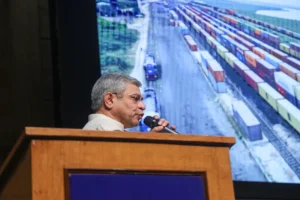
Gaganyaan, ISRO’s ambitious manned mission, will undergo several tests this year, and 2024 will be a year of “Gaganyaan readiness,” the agency’s chairman, S Somanath, announced here on Monday.
Earlier in the day, the space agency with its headquarters located in Bengaluru successfully launched its first X-Ray Polarimeter satellite on the PSLV C58 mission.
Speaking with reporters about ISRO’s 2024 plans, he stated, “We will be preparing for a minimum of 12 to 14 missions this year.” Although it is intended for 2025, Gaganyaan readiness will be achieved in 2024.
“The Gaganyaan mission began with the TV-D1 or the abort mission (successfully conducted in October 2023). We have four such missions in the series. Our target is to do at least two more in 2024. By then, we will have three abort mission demonstrations,” Somanath, who is also a Secretary in the Department of Space, said.
Also read: Puri Jagannath Temple makes dress code mandatory for devotees
According to Somanath, the agency would gain insight into its readiness for different types of hardware through unmanned missions. He also mentioned that ISRO would carry out drop tests from helicopters to validate the parachute systems for the unmanned mission.
“Several drop tests will be conducted. In addition, hundreds of valuation tests, such as simulation tests, tests about the crew module, environmental control support system tests, and launch pad abort, will be conducted, the speaker added.
Also read: Puri Jagannath Temple makes dress code mandatory for devotees
He stated, “We are going to have launches of GSLV for NISAR this year itself,” about the other missions planned by ISRO for 2024. Soon, the first GSLV flight using INSAT-3DS will take place. The vehicle for the launch is nearly ready.
“The second flight of GSLV will carry the NASA-ISRO synthetic aperture radar satellite. This means that a minimum of two GSLV satellites are required to be launched. There are a few more in the pipeline, including the NAVIC series.” he said.
To read more such news, download Bharat Express news apps


















